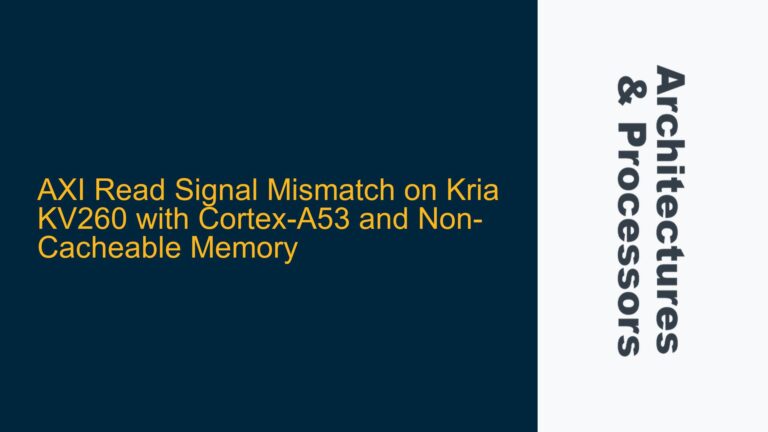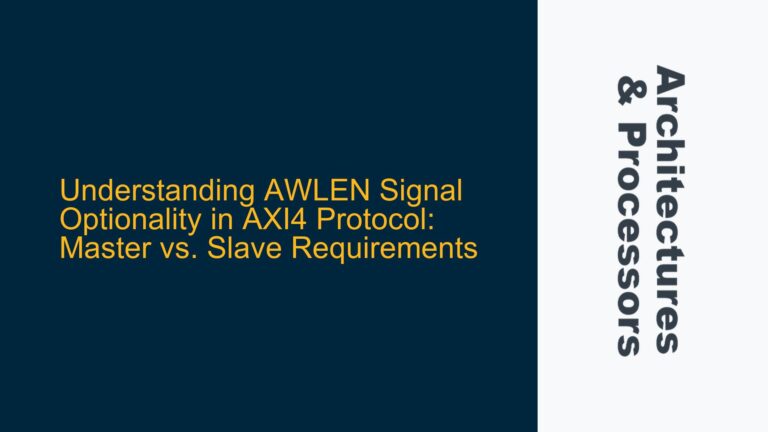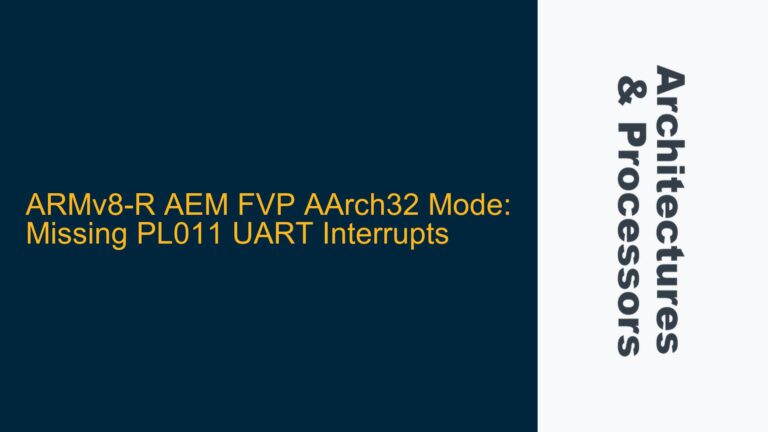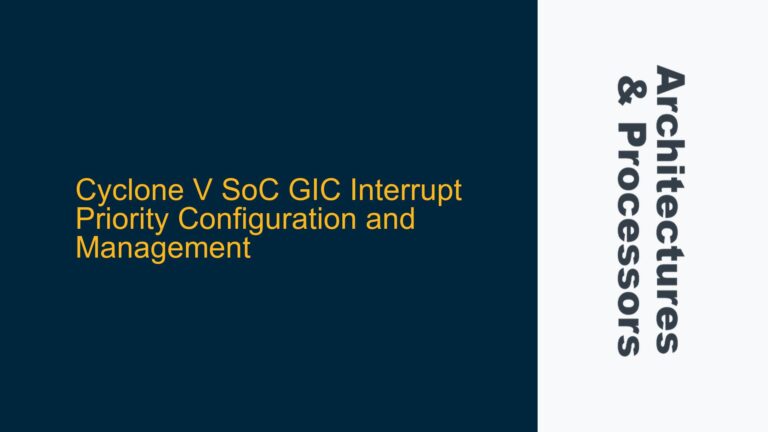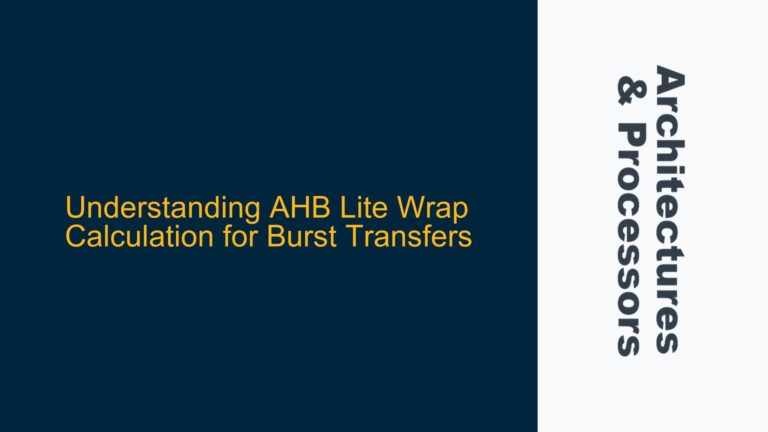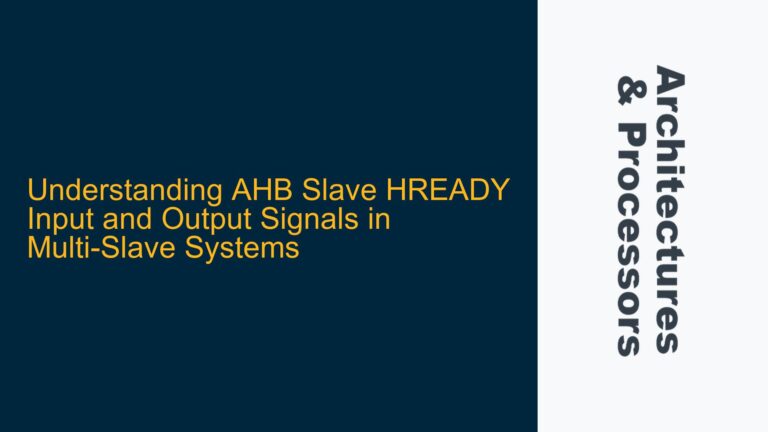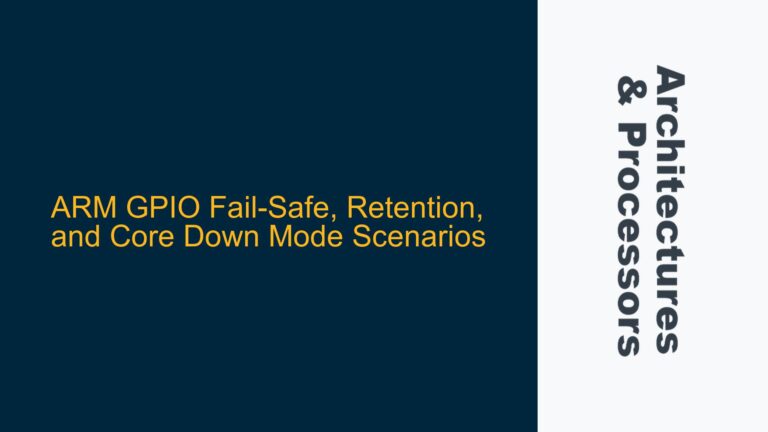AXI Read Signal Mismatch on Kria KV260 with Cortex-A53 and Non-Cacheable Memory
Cortex-A53 AXI Read Signal Anomalies with Non-Cacheable Memory The issue revolves around unexpected behavior in the AXI read signals when accessing non-cacheable memory regions on a Kria KV260 board with a Cortex-A53 processor. Specifically, the AXI read transactions exhibit discrepancies in signal values, such as ARSIZE and ARLEN, when compared to the expected behavior for…
